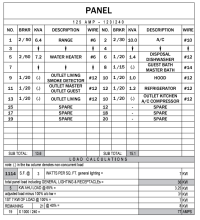jar546
CBO
You are on a final inspection. This is what they have on the prints for a load calc/panel schedule combo. (see pic) However, the PDF link is to the actual kitchen range that was installed for final inspection. What do you do?
Actual Range Installed PDF

Actual Range Installed PDF

